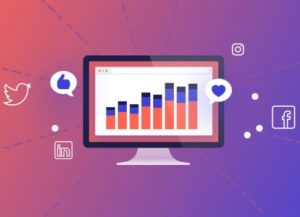Web Analytics & SEO: What You Need To Know
About Website Analytics & SEO –

The measurement, gathering, analysis, and reporting of web data for the purpose of comprehending and improving web usage is known as web analytics. Web analytics is a procedure that may be used to analyze website traffic as well as conduct market and commercial research, as well as evaluate and enhance the performance of websites.
Applications for web analytics can also assist businesses in evaluating the success of conventional print or broadcast advertising efforts. It can be used to predict how website traffic will vary if a new advertising campaign is launched.
Web analytics can be used to develop user behavior profiles or provide information on the number of visits and page views to a website. It aids in determining popularity and traffic trends, which is helpful for market research.
Web Analytics Measurements
The following list, based on such norms, can be a helpful place to start because many phrases are used consistently from one big analytics program to another:
Bounce Rate – The proportion of visits that are one-page only and that do not result in any additional interactions (clicks) on the page. In other terms, a bounce is a single click during a certain session.
Click path – The click path is the visit’s or session’s chronological order of page views.
Website Hits – A web server request for a file. only available for log analysis. A website’s hits are sometimes used as evidence of its popularity, yet this statistic is quite deceptive and vastly exaggerates popularity. The number of hits is really an arbitrary number that more accurately reflects the complexity of individual pages on the website than the actual popularity of the website because a single web page typically consists of multiple (often dozens) of discrete files that are each counted as a hit as the page is downloaded. A more true and accurate evaluation of popularity is provided by the overall number of visits or page views.
Page View – Page views are requests for files or occasionally events like mouse clicks that are classified as pages in the web analytics tool’s configuration. a case when the script was used for page tagging. A single page visit may result in numerous hits in a log analysis since the web server also requests the images,.js, and.css files needed to see the page.
Unique Visitor – The uniquely recognized client who is producing page views or hits within a given time frame is referred to as a visitor, unique visitor, or unique user (e.g. day, week or month). Typically, a uniquely identified client consists of a device (such as a person’s work computer desktop) and a browser (Firefox on that machine). Typically, a permanent cookie that was downloaded to the user’s computer by the website page code is used for identification.
The unique combination of the computer’s IP address and the User-Agent (browser) data sent to the web server by the browser is an older technique used in log file analysis. Since a single person can use many computers or different browsers on the same computer and be seen as a distinct visitor in each situation, it is crucial to recognize that the “Visitor” is not the same as the person using the computer at the time of the visit. Visitors are increasingly, though still infrequently, uniquely recognized through Flash LSOs (Local Shared Objects), which are more resistant to privacy enforcement.
Visitor Sessions – A visit or session is defined as a collection of page requests, or in the case of tags, an image request, from a single, specifically recognized client. An IP address or a special ID stored in the browser cookie are two basic ways to identify a distinct client. When a certain amount of time has passed without any requests being made, a visit is deemed to be over. Many analytics programs have a 30-minute time limit (“time out”), although some tools (like Google Analytics) allow you to adjust it to a different number of minutes.
A visit is considered one visit as long as the events (page views, clicks, whatever is being recorded) are 30 minutes or fewer apart; analytics data collectors and analysis systems have no reliable method of determining if a visitor has looked at other sites between page views. Be aware that a visit could consist of thousands of page views or just one. If the time between page loads shows that a visitor has been viewing the pages constantly, a unique visit session may also be prolonged.
If you need help tracking your web analytics or need help with SEO, contact us now to request more information. We offer both SEO services in consultation services.